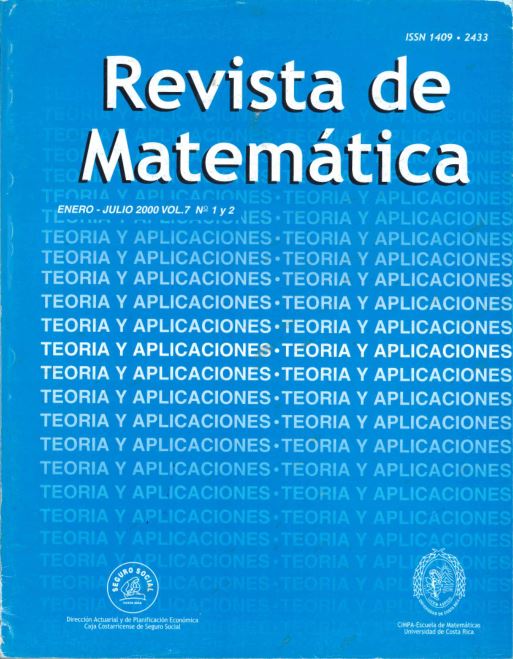Abstract
Some recent developments in factor analysis of multi-sets are introduced in this short course. The more usual factor analyses are based on the singular values de-composition. So, the analyses of two matrices here are introduced from a qualitative criterion, for a non redundancy of partial relations between "common factors". A proposal for extending the simple linear regression, here considered between the two sets of the individuals which define the two sets of variables, lead to specific measures for each matrix. Some juxtapositions of graphics then are justified. The whole previous approach is extended for analyzing the dependency of K matrices with one matrix. The ACOM of Chessel and Hanafi (1996) then is considered as a PCA of sets of variables.
References
Balbi, S.; Esposito, V. (1999) “Rotated canonical analysis onto a reference subspace”, Computational Statistics and Data Analysis, North Holland.
Bertin, J. (1967) Sémiologie Graphique. Mouton/Gauthier-Villars, Paris/La Haye.
Boucays, F.; Lafosse, R.; Madrid, C.; Treil, J. (1998) “Spatial concordance of a 3D cephalo-metric analysis of 29 subjects”, #3136J. Dent. Res. 77 (IADR Abstracts).
Cazes, P.; Baumerder, A.; Bonnefous, S.; Pagès, J.P. (1977) “Codage et analyse des tableaux logiques. Introduction à la pratique des variables qualitatives”, Cahiers du BURO27, Université de Paris VI.
Chanut, J.P.; Lafosse, R.; Demers, S.; Mostajir, B.; Chatila, K.; Belzile, C.; Roy, S.; Gosselin, M. (2000) “Analyse de concordance entre traitements: cas d’une communauté planctonique sous rayonnement ultraviolet-B”, XXXII Journées de Statistique, SFdS, Fez, Maroc.
Chessel, D.; Hanafi, M. (1996) “Analyses de la co-inertie de K nuages de points”, Revue de Statistique Appliquée 44(2): 35–60.
Cliff, N. (1966) “Orthogonal rotation to congruence”, Psychometrika 31: 33–42.
D’Ambra, L.; Lauro, N.C. (1982) “Analisi in componenti principali in rapporto a un sottospazio di riferimento”, Riv. Statist. Appl. 15: 51–67.
Dolédec, S.; Chessel, D. (1994) “Co-inertia analysis: an alternative method for studying species-environment relationships”, Freshwater Biology 31: 277–294.
EDA Summer School, http://www.unige.ch/ses/sococ/mirage/
Gabriel, K.R. (1971) “The biplot graphic display of matrices with application to principal component analysis”, Biometrika 58: 453–457.
Green, B.F. (1952) “The orthogonal approximation of an oblique estructura in factor analysis”, Psychometrika 17: 429–440.
Gower, J.C.; Hand, D.J. (1996) Biplots. Chapman & Hall, London.
Guttman, L. (1953) “Image theory for the structure of quantitative variates”, Psychometrika18: 277–296.
Hanafi, M. (1997) Structure de l’Ensemble des Analyses Multivariées des Tableaux de Données à Trois Entrées: Eléments Théoriques et Appliqués. Thèse de Doctorat, Université Claude Bernard, Lyon I.
Hanafi, M.; Lafosse, R. (in press) “Généralisations de la régression linéaire simple pour analyser la dépendance de K ensembles de variables avec un K+1 ème”, Revue de Statistique Appliquée.
Harshman, R.; Lundy (1984) “Data prepocessing and extended PARAFAC model”, in: H.G. Law, C.W. Snyder, J.A. Hattie & R.P. McDonald (Eds.) Research Methods for Multimode Data Analysis, Praeger, New York: 216–284.
Johansson, J.K. (1981) “An extension of Wollenberg’s redundancy analysis”, Psychometrika 46: 93–103.
Kiers, H.; Ten Berge, J. (1994) “Hierarchical relations between methods for simultaneous component analysis and a technique for rotation to a simple simultaneous structure”, British Journal of Mathematical and Statistical Psychology 47: 109–126.
Lafosse, R. (1997) “Analyse de concordance de deux tableaux: monogamies, simultanéités et découpages”, Revue de Statistique Appliquée 45(3): 45–72.
Lafosse, R.; Hanafi, M. (1997) “Concordance d’un tableau avec K tableaux: définition de K+1 uples synthétiques”, Revue de Statistique Appliquée 45(4): 111–126.
Lafosse, R.; Hanafi, M. (1997) “Concordances d’un tableau avec K tableaux et analyse deco-inertie de K tableaux”, XXIX Journées de Statistique, ASU-SSF, Carcassonne.
Lafosse, R.; Chessel, D. Hanafi, M. (1997) “Analogies de structures de vins de Cahors”, 5èmes Journées Européennes Agro-Industrie et Méthodes Statistiques 25: 1–10.
Lafosse, R. (1998) “Programme de l’analyse CONCOR en langage MATLAB”, version 1.3.ftp: //ftp.mathworks.com/pub/contrib/v5/stats/concor/ or E-Mail to: lafosse@cict.fr.
Lafosse, R. (1999) “Analysis of concordance between matrices and proposals for selecting variables”, IX International Symposium on Applied Stochastic Models and Data Analysis, Lisboa. Lafosse, R. (1999) “Analyses of some relation between arrays and graphics”, Proc. Int. Conf. on Probability and Statistics and their Applications, Hanoi.
Rao, C.R. (1964) “The use and the interpretation of principal component analysis in applied research”, Sankhya (series A) 26: 329–358.
Stewart, D.; Love, W. (1968) “A general canonical correlation index”, Psychological Bulletin70: 160–163.
Ten Berge, J.M.F. (1977) Optimizing Factorial Invariance. Doctoral Thesis, Groningen.
Tucker, L.R. (1958) “An interbattery method of factor analysis”, Psychometrika 23: 111–136.
Free software, with Xlisp.stat, http://forest.psych.unc.edu/researh/ViStaF.html
Wold, S.; Kettaneh, N.; Tjessem, K. (1996) “Hierarchical multiblock PLS and PC models for easier interpretation and as an alternative to selection variable”, Journal of Chemometrics 10: 453–482.
